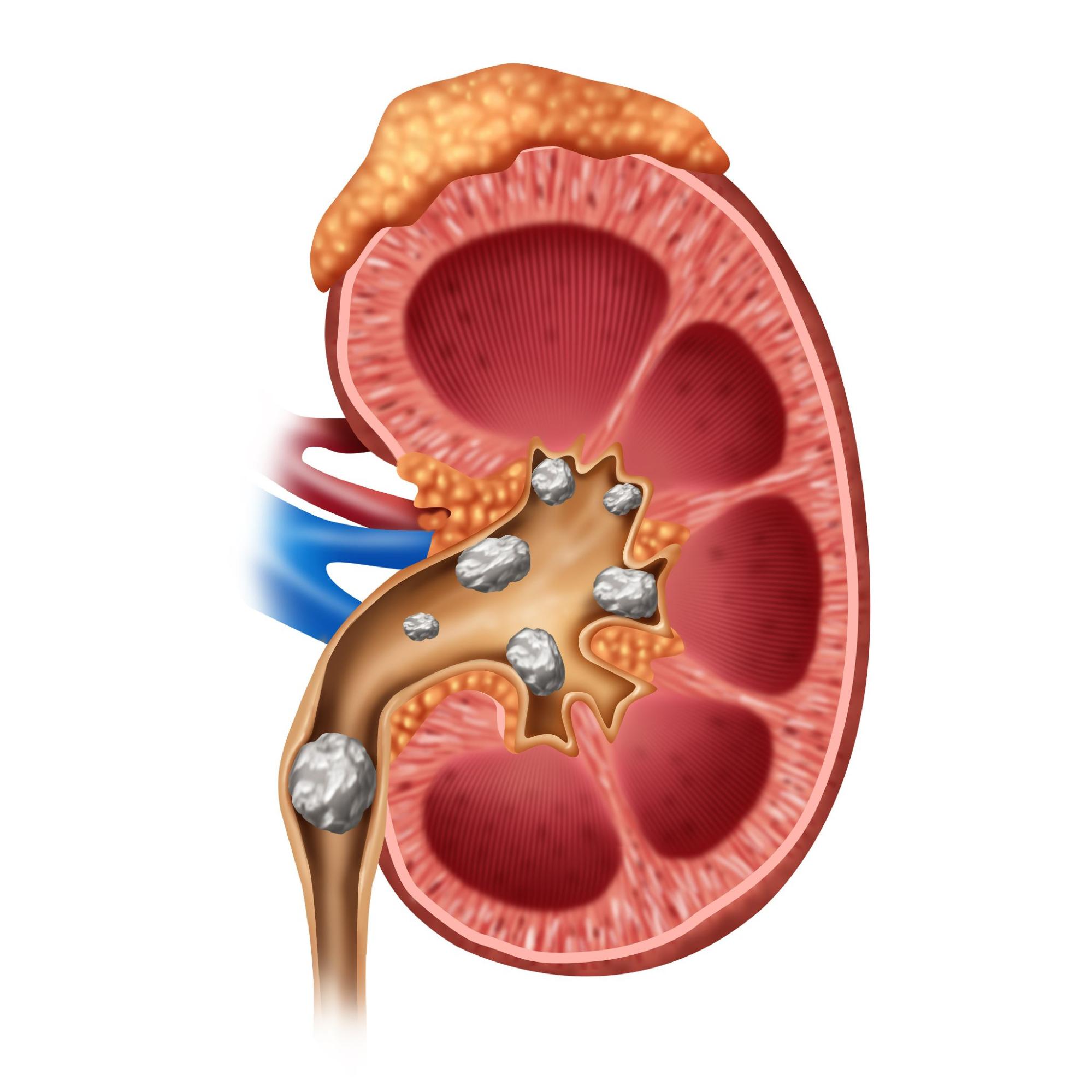Kidney Stones / Urology
Kidney Stone – The Most Painful Urological Disorder: Prevalence and Risk Factors

by admin
25th August 2023
6 minutes read
The mere mention of the phrase ‘kidney stones‘ can elicit shivers down the spine for anyone who has ever suffered from this excruciating health condition. Kidney stones, scientifically known as renal calculi, represent one of the most painful urological disorders known to man. This article aims to explore the prevalence and risk factors of kidney stones, including a closer look at the different types of kidney stones, the reasons they form, their typical locations of pain, and available treatment options.
Understanding Kidney Stones
A kidney stone, or renal calculus, is a hard, crystalline mineral material formed within the kidney or urinary tract. It occurs when your urine contains more crystal-forming substances — such as calcium, oxalate, and uric acid — than the fluid in your urine can dilute. These stones can vary in size, from as small as a grain of sand to as large as a golf ball. Depending on their size and location, kidney stones can cause immense pain — often described as worse than childbirth.
The term ‘calculus in kidney’ essentially refers to the same condition, highlighting the solid, stone-like formations that develop due to the accumulation of these minerals. According to data, the prevalence of kidney stones has seen an upward trend over the years, with some studies showing that up to 10% of people will have a kidney stone at some point in their lives.
Prevalence of Kidney Stones
The prevalence of kidney stones varies widely globally. In the United States, it’s estimated that about 1 in 11 people will experience a kidney stone at some point in their life. In contrast, Asian countries have a lower prevalence rate, but they have seen a steep rise in recent years due to dietary and lifestyle changes. Alarmingly, the frequency of kidney stones in children has also shown a significant increase.
Risk Factors: Causes and Reasons for Kidney Stones Formation
Understanding the causes of kidney stones is key to knowing how to prevent them. Various risk factors increase the likelihood of developing this painful condition. They include:
1. Dehydration:
Lack of sufficient water intake increases the risk of kidney stones. When the body is dehydrated, urine concentration increases, providing a conducive environment for the formation of stones.
2. Diet:
Diets high in protein, sodium, and sugar can boost the risk of certain types of kidney stones. This is especially true with a high-sodium diet, which increases calcium in the kidneys and promotes stone formation.
3.Obesity:
Higher body mass indexes (BMIs), large waist sizes, and weight gain have been linked to kidney stones.
4.Medical conditions:
Certain diseases and conditions increase the risk of kidney stones. These include renal tubular acidosis, cystinuria, hyperparathyroidism, and urinary tract infections.
5.Family or personal history:
If someone in your family has kidney stones, you’re more likely to develop stones, too. If you’ve already had one or more kidney stones, you’re at increased risk of developing another.
6.Certain medications:
Some drugs, including certain diuretics, calcium-based antacids, and medications used to treat migraines or depression, can increase your risk of kidney stones.
Pain Location and Symptoms
Kidney stone pain, also known as renal colic, is often severe and can occur in waves. The pain typically starts in your back or side below your ribs before radiating into your lower abdomen and groin. The pain might come and go, varying in intensity, and could be accompanied by other symptoms such as nausea, vomiting, fever, or blood in the urine. The precise location of the pain can shift as the stone moves through your urinary tract.
Treatment and Management of Kidney Stones
Kidney stone treatment depends largely on the size and type of the stone. For small stones, consuming plenty of water and taking over-the-counter pain relievers can help. On the other hand, larger stones might necessitate more intensive treatment.
Medication, known as kidney stone medicine, can help control the pain and aid in passing the stone. Some medications can also help by preventing certain types of stones from forming and reducing the amount of crystal-forming substances in your urine.
For larger kidney or ureteral stones, extracorporeal shock wave lithotripsy (ESWL) can be used. This non-invasive technique uses sound waves to break the stones into tiny pieces that can then be excreted in the urine. For stones that cannot be treated with ESWL, other more invasive procedures may be required.
Prevention is Key
Given the painful nature of kidney stones, prevention is paramount. Staying hydrated, maintaining a diet low in sodium and rich in calcium, limiting animal protein and foods high in oxalates, and maintaining a healthy body weight are all essential measures to prevent kidney stones.
Understanding kidney stones — their causes, risk factors, pain locations, and treatments — can help you manage or even avoid this painful condition. Kidney stones, while common, are largely preventable, and being armed with the right information is the first step in kidney stone prevention.
Conclusion
In summary, kidney stones, or renal calculi, represent a prevalent and agonizing health issue. As painful as they are common, understanding the causes and risk factors of kidney stones is essential for prevention and effective management. By staying informed and taking active steps to reduce your risk, you can avoid becoming part of the growing statistic of people suffering from this condition.
How Can Medfin Help?
Medfin is your gateway to experienced doctors and surgeons, each with over of 10 years of experience, offering specialized assistance for kidney stone issues. Prioritize your kidney health with Medfin’s access to top-notch professionals, ensuring a comprehensive and effective approach to managing and treating kidney stones. So why wait? Call us today!
FAQs
Yes, kidney stones have a high recurrence rate. People who have experienced kidney stones are at an increased risk of developing them again, but preventive measures can significantly reduce the likelihood of recurrence.
If not treated promptly, kidney stones can lead to complications such as recurrent infections, kidney damage, and obstructive uropathy, which can impair kidney function.
Some natural remedies like increasing lemon juice consumption, consuming apple cider vinegar, and drinking herbal teas have been suggested to aid in kidney stone prevention, but it’s essential to consult a healthcare professional before relying solely on these methods.
Diagnosis involves a medical history review, physical examination, imaging tests (X-rays, CT scans), and urinalysis to identify the presence of kidney stones and their characteristics.
While kidney stones can affect people of all ages, they are most common in individuals between the ages of 30 and 60. However, individuals with predisposing risk factors can develop kidney stones at any age.
CATEGORIES
- ACL Reconstruction
- Anal Fissures
- Anal Fistula
- Appendicitis
- ASK A DOCTOR
- Benign Prostatic Hyperplasia
- Breast Lump Excision
- Cataract
- Circumcision
- Conditions & Diseases
- Cosmetology
- Covid-19
- Cure
- Endocrinology
- ENGLISH VIDEOS
- Eye Care
- Gallstones
- General Surgeries
- Government Schemes
- Gynaecology
- Gynecomastia
- Health
- Health Insurance
- Hernia
- hindi
- Hip Arthoscopy
- Hip Replacement
- Hip Replacement Surgery
- Hydrocele
- Kannada
- Kidney Stones
- Knee Arthroscopic
- Laparoscopic
- LASER
- Latest Treatments
- Lifestyle
- Liposuction
- Medfin Stories
- Medicine
- Nephrology
- Ophthalmology
- Orthopaedic
- Paraphimosis
- Patient Testimonials
- PCL Reconstruction
- Phimosis
- Piles (Hemorrhoids)
- Pilonidal Sinus
- Proctology
- Prostate Artery Embolization
- Rhinoplasty
- Second Opinion
- Total Knee Replacement
- Uncategorised
- Urology
- uterine artery embolization
- Uterine Fibroids
- Varicocele
- Varicose Veins
- Vascular
- VIDEOS






